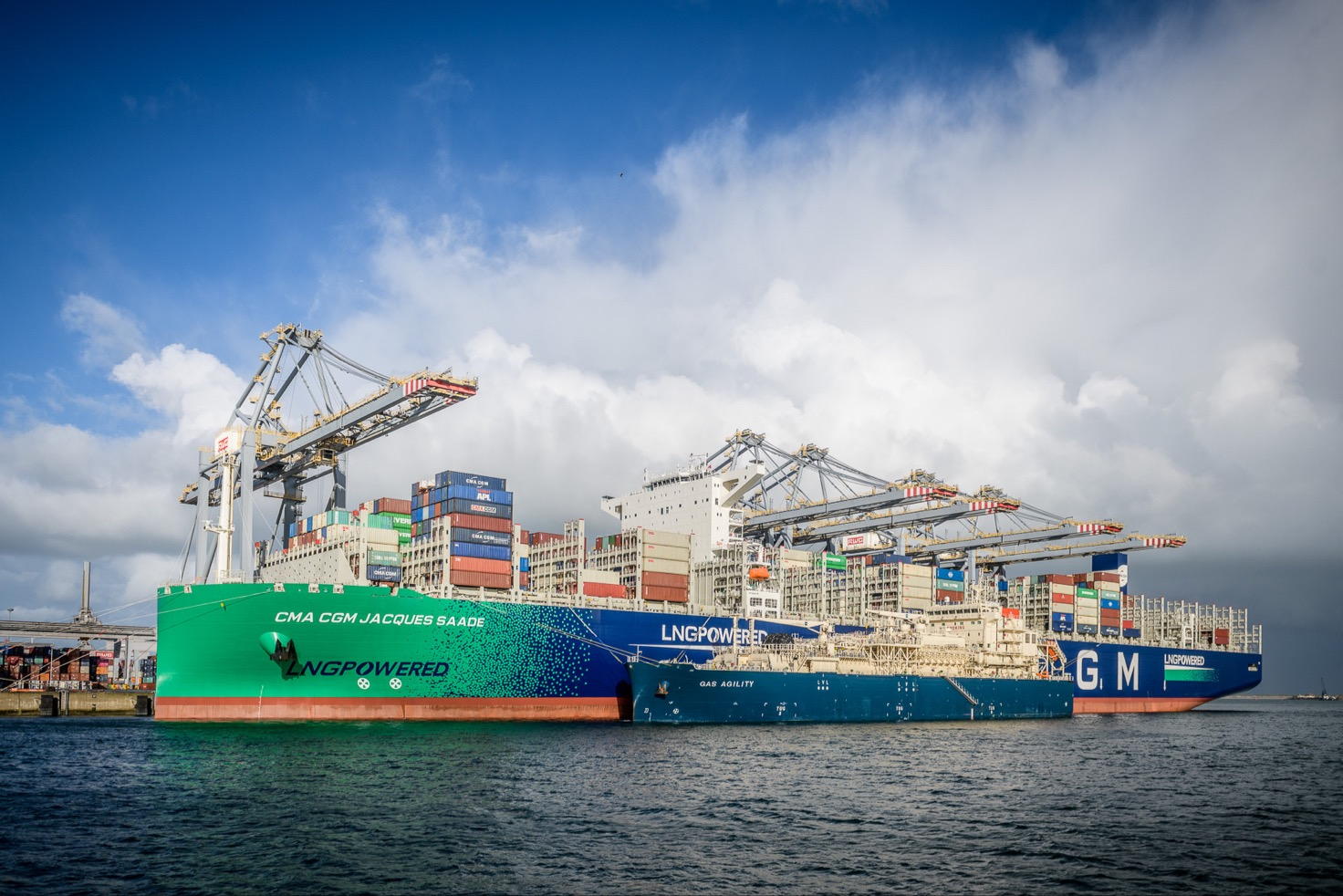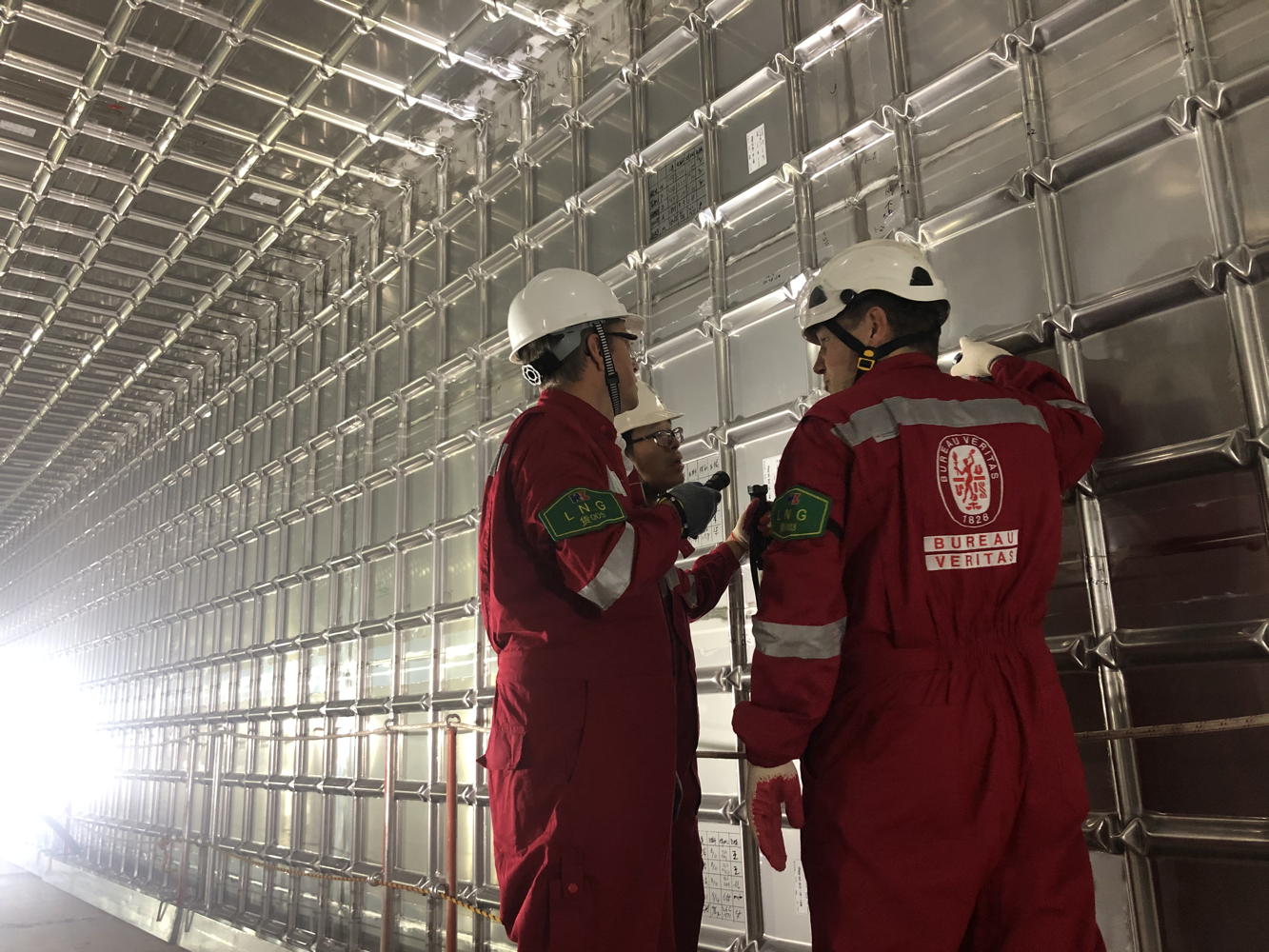Following a momentous year for LNG as a marine fuel, Rolf Stiefel of Bureau Veritas (BV), Germany, reflects on the success as well as some of the challenges that lie ahead for shipping as it readies itself to make the transition to a cleaner future ahead
The shipping industry is making the transition to a lower carbon future. One of the key steps being taken now[ds_preview] to make that transition is the development of LNG-fueled shipping. 2020 has been a very significant year for LNG as a marine fuel with four of the nine 23,000TEU gas fueled containerships ordered by CMA CGM entering into service. There are also a further five 15,000TEU ships being built for the same owner. In parallel, to bunker the 23k TEU ships, the world’s largest LNG bunkering vessel, the »Gas Agility«, has also entered service and the largest ever ship-to-ship bunkering which, in this case, was from 18,600m3 membrane tank to 18,600m3 membrane tank (another first), took place in Rotterdam in November last year when the »CMA CGM Jacques Saade« was on her maiden voyage. All these ships and the bunker vessel are, or will be, classed by BV.
To date, LNG as a marine fuel has primarily been used for ferries, offshore support vessels (OSVs), and other relatively small-scale ship types and sectors. This is now changing, and the biggest and most important challenge for deep-sea shipping – reducing emissions – is now being addressed.
Pioneer CMA CGM
It was in November 2017 that Rodolphe Saadé, Chairman and CEO of CMA CGM Group, made the pioneering choice to equip its future series of nine 23,000TEU mega ships with LNG-powered, low speed engines – a first in the history of shipping for ultra large container vessels (ULVCs) and a first step towards energy transition of deep-sea maritime transportation at significant scale. The installed power of these nine container ships alone eclipses the total installed power of all other LNG fueled ships to date with 63.840kW on the single crankshaft.
The increased size of this new breed of LNG-fueled ships is driving bunkering needs well beyond the capacity of LNG trucks, or even small bunker barges used for smaller bunkering operations at bunkering terminals. This has led to the development of LNG bunkering vessels (LNGBVs). Although a fairly recent development within the LNG value chain, LNGBVs are quickly gaining a prominent role and growing in size, offering a higher volume potential as well as significant flexibility, effectively removing barriers related to port infrastructure and draft limitations.
Regulatory challenge
However, as with every emerging technology there comes the challenge of adapting to a regulatory framework that is constantly evolving. Bureau Veritas has been working closely with the industry to understand and address the risks and challenges clients and stakeholders face. BV’s position across the whole LNG value chain has allowed active participation in the development of LNGBVs as well as projects such as that of the CMA CGM ships to become a reality.
BV is also working on the potential alternative fuels of tomorrow: addressing many of the risk, regulatory, technical, technology, and innovation challenges to ensure that new hydrogen, methanol, or ammonia-based propulsion solutions and containment systems will be fit for purpose – providing the confidence that shipowners and providers of capital or insurance will require. But to progress from where we are today to the commercial and logistical availability of such new fuels and new ship designs to bunker those fuels for deep-sea maritime transportation may be a long road. If we know that LNG is a transition fuel, we do not know how long that transition may be. And, right now, gas fueled ships are the cleanest option. There is no other viable alternative commercially available and that is likely to remain the case for the decade to come – or perhaps for even longer.
No alternative available
When combined with other operational measures such as carbon capture (CC) onboard of ships, the development of more bio-methane, or the production of hydrogen based synthetic methane, LNG may provide a longer bridge than many had initially anticipated. Indeed, it has the potential to become a real future proof fuel option for decarbonizing deep-sea maritime transportation.
In its recent report released in July – »Decarbonizing Shipping: All Hands on Deck« – Shell addressed many of the opportunities and challenges the industry is facing. LNG raises questions particularly related to its methane emissions (or, as the issue is more commonly referred to as, methane slip) across the supply chain. Certainly, camps of those for gas and those against have now formed – the latter stating that investment in LNG now is wasteful, that it will not meet climate ambitions, and that investment should be focused on greener alternatives. The crux though is that there is no other alternative fuel option available yet for deep-sea maritime transportation. This might result in »no investment« in new tonnage coming years, effectively extending the operational lifespan of outdated inefficient vessels just to satisfy transportation needs.
The fact is that both LNG today and tomorrow, as well as the prospect of greener fuels on the horizon will have to co-exist. BV’s perspective is that we need to address the risks and challenges of all potential fuels and technologies.
Today the only mature option is LNG, but even with LNG the need remains to expand the infrastructure – hence BV’s focus on supporting the development of safe LNG bunker vessels (LNGBVs) and bunkering operations, as well as supporting owners of LNG fueled ships. In its own recently released Technology Report, Bureau Veritas describes the key areas of development for LNGBVs, focusing on:
• Containment systems
• Operational profile
• LNG transfer systems
But perhaps the most significant recent factor helping drive the development of LNG into more mainstream and deep-sea trades is the efficiency of the newest dual-fuel engines developed by MAN and WinGD. Both engine designers have been addressing the concerns raised by data from the earliest four-stroke engines related to methane slip during the combustion cycle.
While the four-stroke engines have also now improved, the overall efficiency of the new larger, two-stroke low speed engines suitable for deep-sea ships, offers a much higher level of performance than seen to date. These engines provide a credible and immediately available option, with the additional potential to burn carbon-neutral synthetic gas, bio-methane, or apply CC. These are very positive developments for shipping and the new ULVCs recently delivered to CMA CGM are flagships for this new breed of two-stroke, dual-fueled engines.
While we keep looking at the full range of options we need to make the best use of the technology and fuels available today to accelerate the urgently needed fleet renewal to modern more efficient designs. The availability of LNG and of ever improving engines, containment systems, new bunkering infrastructure, and anticipated growing demand for shipping means that LNG is a fuel of the future – but available today.
Rolf Stiefel, Regional Chief Executive Central Europe and Russia, Bureau Veritas





















